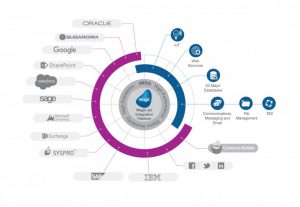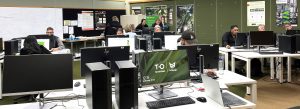Benchmarking For Field Service Success

In the field of service industry, operational efficiency is essential for empowering an organisation’s most important attribute – its ability to satisfy its customers.
In a Strategies for Growth survey published last year, 64% of UK/Europe respondents stated that developing and improving metrics or KPIs was critical to strive and attain best practices status, up from 52% the previous year.
However, there are many different measurements it’s difficult to know which ones are the most important.
Here are four different types of KPIs that can be used to assess those aspects service delivery that can have the biggest impact on customer satisfaction.
1.Service Levels
Expressed as absolute numbers, averages and percentages. This data should be reliable, repeatable and relevant — and collected without unusual amounts of effort.
Examples include average response time, average repair times, level of compliance with service level agreements, and mean time to repair rate (MTTR), which measures the latency of the entire process from service request to completion.
2. Customer Opinions
Subjective assessments of the quality of field service expressed numerically. One of the most popular examples is Net Promoter Score: your customers’ willingness to recommend your organisation to friends and colleagues.
Originated by Bain & Company it is a faster, more responsive alternative to annual customer satisfaction surveys and is calculated by taking the percentage of promoters (9s and 10s on a 10-point scale) minus the percentage of detractors (0 – 6 on a 10-point scale). While customer loyalty isn’t the sole growth factor, Bain & Company determined that, on average, companies with higher Net Promoter Scores grow at more than twice the rate of competitors.
3. Efficiency Measures
Performance expressed in terms of a ratio. For example, percentage of billable technician time. This measurement keeps track of how much time your techs are actually working on servicing your customers rather than filling out time-sheets, attending meetings or handling other activities unrelated to productive work.
Other important field service metrics include First-Time-Fix Rate (FTR), which measure how often technicians successfully close a ticket on the first call which is often dependent on having the right parts based on relevant available information.
4. Service Complexity
Looks at the combination of people, products and systems to simplify processes to improve performance. This is one of simplest metrics to measure — and also one of the most crucial. It breaks down the average response time of your organisation into the number of distinct steps between service request and final invoicing.
For instance, the customer calls to request service, a dispatcher manually enters a work order to the system, then a work order is generated, then the field tech is assigned and dispatched, then the tech arrives on-site and completes an additional form, etc. Breaking down service into a series of steps helps identify how many different systems and people are involved to identify redundant tasks and areas that can benefit from automation.
KPIs can also be used to identify opportunities to connect and streamline processes between systems.
For example, better integration between systems can help reduce MTTR by implementing automatic triggers and event handlers between ERP and FSM to improve efficiency of dispatching, route optimisation and field tech productivity.
These four categories of KPIs can help highlight integration bottlenecks and point to process improvements needed for operational excellence.
Measuring and continuously improving operational excellence is important for any industry. In the field service industry, bench-marking all four dimensions of operational excellence is even more critical since excellent customer service is essential for a company’s growth and continued success.
Are you interested in business automation, integration and mobilisation solutions?
Originally posted by magic software – http://blog.magicsoftware.com/2017/04/benchmarking-for-field-service-success.html






